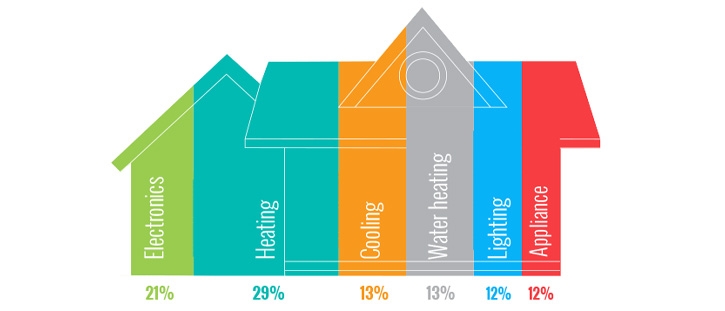Aug 7, 2025
Top 10 Summer Energy-Saving Tips

The annual energy bill for a typical single-family home is $2,200. Source: U.S. Energy Information Administration, 2020 Residential Energy Consumption Survey (RECS)
Electronics include: Device and external power adapters, consumer electronics (computer, TVs and smart home devices), home office equipment and small appliances. Other includes: Dehumidifiers, ceiling fans, hot tub/pool pumps, separate freezers and more.
Here are 10 tips that any energy saver should not live without.
- Use LED bulbs. Replace any light bulb, especially any that burn more than one hour per day, with a light-emitting diode (LED) bulb.
- Seal from the inside. Air sealing is an inexpensive way to lower energy costs and improve comfort. Seal gaps and holes in walls, floors and ceilings with caulk or foam sealant. Look for cracks around windows and where wires and pipes pass through.
- Use smart power strips. Plug electronic devices such as gaming consoles, printers and TVs into power strips to turn off during vacations or long periods without use. Smart power strips and plugs make it an easy task to save money.
- Close shades and drapes during the day to help keep your home cooler in the summer.
- Replace filters. Change your central HVAC system filter regularly according to the manufacturers recommendations. Dirty filters can impact your home comfort and increase your electricity bill.
- Adjust thermostats. A one-degree reduction in cooling setpoint can increase energy use by 3-5%.
- Check duct work. Have your duct work checked for leaks. Leaks at the return, air handler and supply can be a major source of high bills. For mobile homes, check at the grill, cross-over duct and down flow air handler for leaks.
- Check water heaters. Set both the upper and lower water heater thermostats no higher than 120 degrees.
- Wash clothes in cold water. Use hot water only for very dirty loads.
- Check refrigerators. Ensure refrigerator door seals are tight. Eliminate unnecessary refrigerators.
